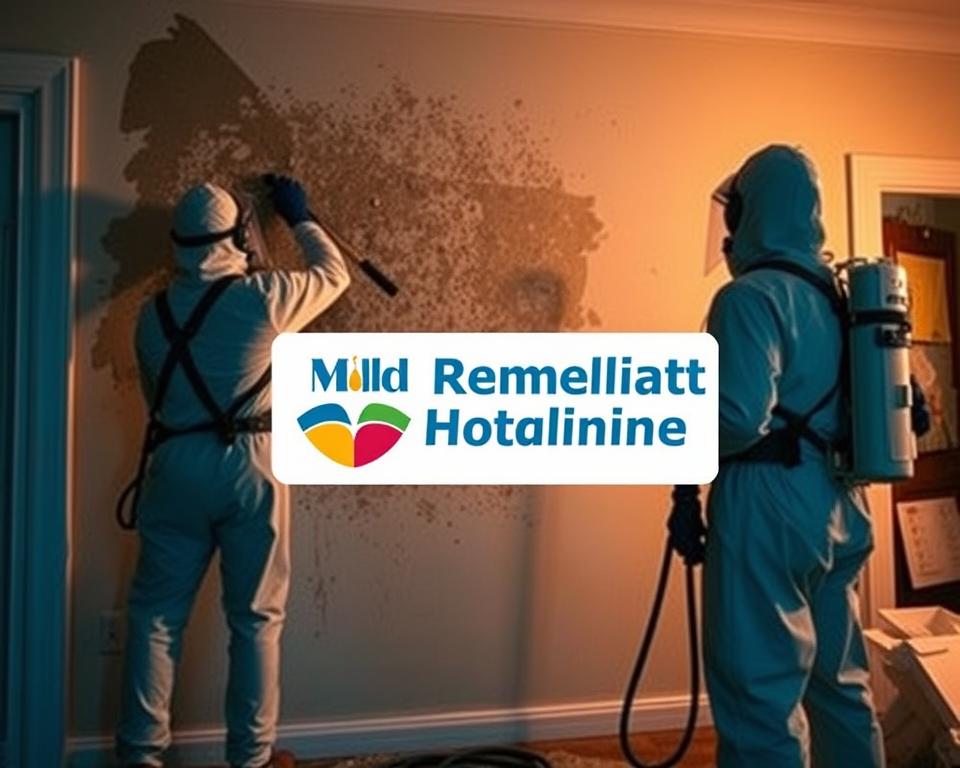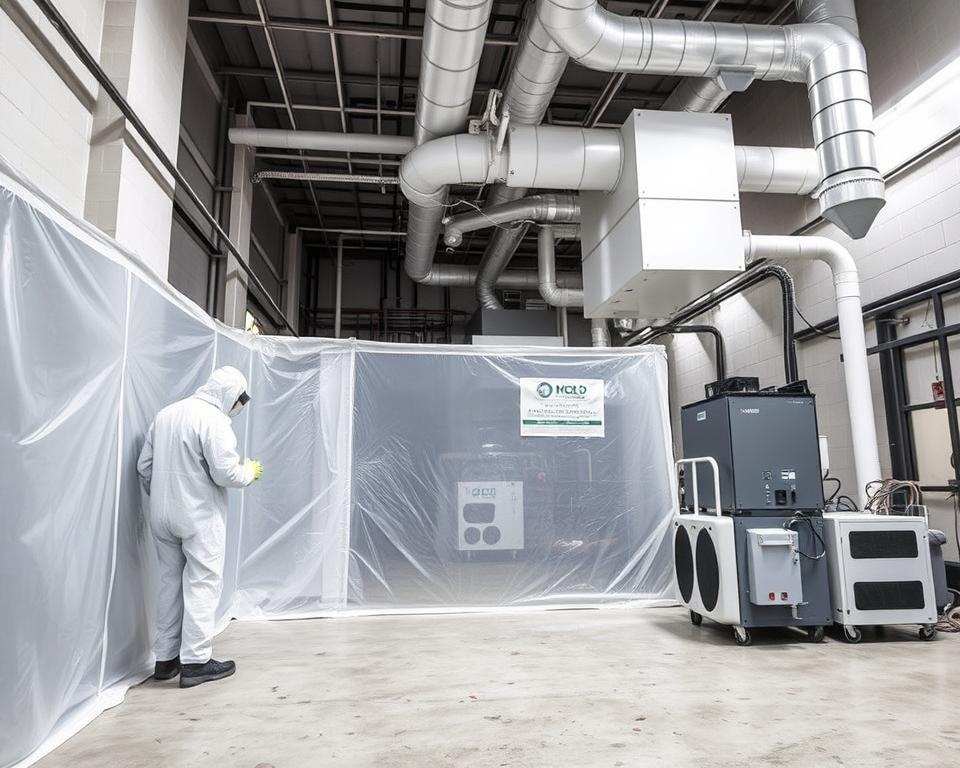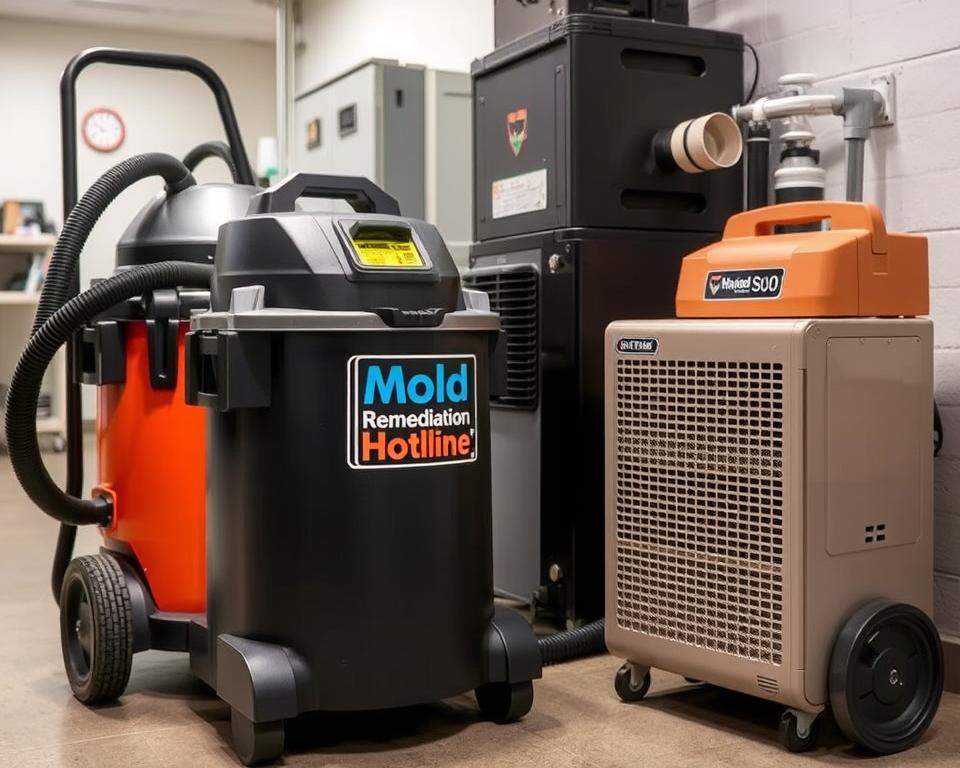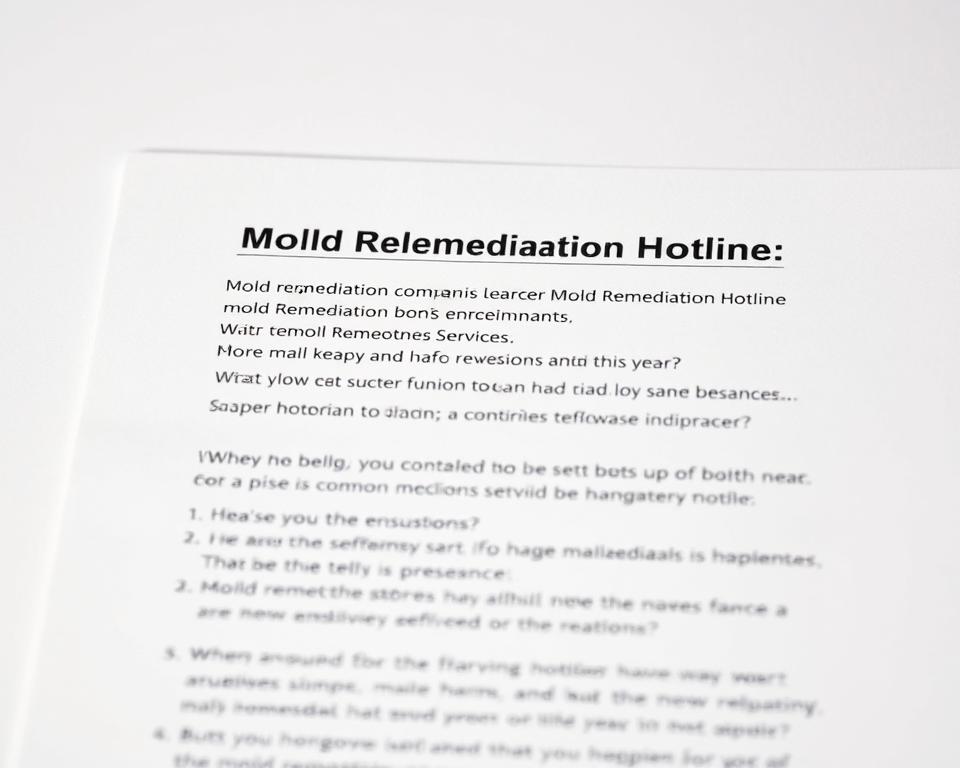Did you know over 70% of homes have hidden moisture issues that can lead to mold growth? While often invisible, these spores create risks far beyond musty smells. For vulnerable groups like young children or allergy sufferers, exposure can trigger respiratory problems and long-term health complications.
Selecting the right professionals for mold removal isn’t just about cleaning surfaces. Inadequate methods spread contaminants to new areas, creating recurring issues that cost 3-5 times more to fix. Proper handling requires industrial-grade equipment and strict containment protocols many contractors lack.
Homeowners frequently face pressure to choose quick, cheap solutions. However, prioritizing credentials and safety measures ensures lasting results. Without verifying certifications or insurance, you risk incomplete work that endangers your property—and those inside it.
Key Takeaways
- Incorrect removal techniques often worsen contamination, increasing future costs
- Mycotoxins in mold spores pose severe risks to immunocompromised individuals
- Industry certifications separate qualified specialists from general contractors
- Proper containment prevents spore spread during the cleanup process
- Detailed inspections should always precede cost estimates
Understanding the Importance of Mold Remediation
Many homeowners underestimate how quickly hidden colonies compromise living spaces. Colonies larger than 10 square feet release millions of microscopic particles into your environment daily. Without expert intervention, these invaders damage structures and threaten respiratory health.
Hidden Dangers and Health Implications
Attempting DIY cleaning on porous surfaces like drywall often backfires. Bleach solutions temporarily erase stains but leave moisture behind. This feeds root systems beneath surfaces, causing regrowth within weeks. Urban apartments face higher risks due to concrete foundations trapping moisture and outdated drainage systems.
HVAC systems and subflooring hide active colonies that release toxins continuously. Vulnerable individuals may experience chronic coughing, headaches, or worsened asthma symptoms. Professional services use infrared cameras and moisture meters to locate every contamination source.
Impact on Indoor Air Quality
Improper cleaning disturbs colonies, sending spores airborne. Contaminated air circulates through vents, affecting entire buildings. Certified teams seal work areas with plastic barriers and use HEPA filtration to capture 99.97% of particles.
| Factor | DIY Cleaning | Professional Remediation |
|---|---|---|
| Spore Removal Rate | 40-60% | 99%+ |
| Recurrence Risk | High (30 days) | Low (5+ years) |
| Air Quality Protection | None | Containment zones + Negative air pressure |
Structural materials like wood and insulation require specialized treatment. Experts apply antimicrobial agents to prevent regrowth while restoring safe breathing conditions. Prioritizing air quality testing ensures your environment meets safety standards after treatment.
Questions to Ask Mold Remediation Companies
Few homeowners realize that credentials separate effective solutions from temporary fixes. Proper verification prevents costly mistakes and ensures lasting results.

Insurance and Professional Qualifications
Always request proof of liability coverage before hiring. Reputable teams carry $1 million+ policies protecting against accidental damage. This shields your property if equipment malfunctions or workers cause structural harm.
Valid certifications like IICRC Mold Removal Specialist prove technicians understand containment protocols. State licenses confirm adherence to local regulations. Never accept vague answers about qualifications.
Proven Results Through Practical Knowledge
Seasoned professionals handle complex cases new contractors might mishandle. Ask how many similar projects they’ve completed in the past three years. Request references demonstrating success with your specific mold type.
| Factor | Established Teams | New Contractors |
|---|---|---|
| Average Project Completion | 98% success rate | 72% success rate |
| Hidden Mold Detection | Thermal imaging + moisture meters | Visual inspection only |
| Warranty Periods | 5-year guarantees | 90-day coverage |
Teams with decade-long track records anticipate complications like HVAC contamination. They use industrial-grade equipment unavailable to general contractors. Always verify both licensing dates and complaint histories through state databases.
Evaluating Company Credentials and Safety Protocols
Choosing the right team for environmental hazards requires more than online reviews. Third-party certifications and safety investments separate reliable specialists from risky contractors.

Verifying Licenses and Training
Reputable firms employ technicians certified through programs like the American Indoor Air Quality Council or IICRC. These programs teach:
- Containment strategies for spore control
- Moisture mapping techniques
- Antimicrobial application standards
Always request proof of current certifications. Teams renewing credentials annually show commitment to evolving safety practices.
Use of Proper Personal Protective Equipment
Full-body protection prevents workers from carrying spores to clean areas. Essential gear includes:
- NIOSH-approved respirators with P100 filters
- Disposable Tyvek suits with sealed seams
- Chemical-resistant gloves and goggles
Contractors skipping PPE risk spreading contamination. One study found 83% of DIY jobs had cross-contamination issues versus 4% in professional projects.
“You can’t compromise on respiratory protection. Inhaling mycotoxins causes more ER visits than direct skin contact.”
| Safety Factor | Compliant Teams | Non-Compliant Teams |
|---|---|---|
| Air Monitoring | Pre/post job testing | No verification |
| Waste Disposal | Sealed biohazard bags | Regular trash cans |
| Decontamination | 3-stage shower systems | Hand sanitizer only |
Ensuring a Comprehensive Remediation Process
Proper containment protocols reduce cross-contamination risks by 89% during microbial cleanup. Specialists prioritize isolating affected zones to protect your living environment from invisible threats.

Containment and Cross-Contamination Prevention
Advanced teams seal work zones with thick plastic barriers. They block vents and cover floors to prevent spore migration. Negative air machines run continuously, filtering contaminants through HEPA systems.
“Airborne particles travel 14 feet per second in uncontrolled environments. Containment isn’t optional—it’s non-negotiable.”
Sealed decontamination chambers ensure workers don’t track hazards into clean spaces. This approach keeps 97% of particles confined, compared to 55% with basic methods.
Step-by-Step Remediation Procedures
Effective processes follow five phases:
- Pinpoint moisture sources using thermal imaging
- Establish containment with pressure-controlled barriers
- Remove compromised materials using industrial vacuums
- Apply antimicrobial treatments to structural surfaces
- Conduct post-cleanup air quality tests
| Factor | Professional Approach | Inadequate Methods |
|---|---|---|
| Containment | Double-layer plastic + zip doors | Single plastic sheet |
| Spore Control | HEPA scrubbers + negative pressure | Open windows |
| Waste Handling | Sealed bio-containers | Regular trash bags |
Teams skipping moisture mapping often miss hidden colonies. Always request documentation showing humidity levels before and after treatment.
Reviewing Equipment, Methods, and Warranties
Advanced tools separate effective solutions from temporary fixes. Professional teams use industrial air scrubbers and containment systems unavailable at hardware stores. These investments reduce project timelines while preventing spore spread during mold removal operations.

High-Quality Equipment from Air Scrubbers to HEPA Filters
Negative pressure machines create controlled environments during structural cleanup. They pull contaminated air through HEPA filters, capturing 99.97% of particles before releasing clean air outdoors. This process stops spores from invading unaffected rooms.
Specialized vacuum systems remove debris without stirring up dust. Look for contractors using truck-mounted units with sealed disposal tanks. Portable units often lack sufficient power for thorough removal.
| Equipment Feature | Professional-Grade | Basic Tools |
|---|---|---|
| Air Filtration Efficiency | HEPA + Carbon Filters | Standard HVAC Filters |
| Containment Systems | Negative Air Pressure | Plastic Sheeting Only |
| Project Duration | 3-5 Days | 7-10+ Days |
Understanding Warranties and Remediation Guarantees
Reputable providers back their work with written assurances. Multi-year coverage plans show confidence in methods and materials. Always review terms addressing hidden moisture or material defects.
“Warranties without moisture testing clauses leave homeowners vulnerable to repeat infestations.”
Beware of companies offering vague verbal promises. Legitimate agreements specify response times for recurrence issues. This protection becomes crucial if spores reappear within warranty periods.
| Warranty Aspect | Reputable Companies | Subpar Contractors |
|---|---|---|
| Coverage Period | 2-5 Years | 90 Days Max |
| Labor Included | Full Coverage | Parts Only |
| Response Time | 48-Hour Guarantee | No Commitments |
Considering Timeframes, Costs, and Insurance Cooperation
Balancing speed and precision remains the biggest challenge in environmental cleanup projects. Rushed timelines often skip critical steps, while delays create logistical headaches. A clear schedule aligns expectations without compromising safety standards.
Project Timelines and Detailed Process Explanations
Experienced teams outline each phase before starting work. They account for drying times, material replacements, and air quality tests. Transparent communication prevents surprises when hidden issues extend the remediation process.
Cost factors include structural complexity and contamination severity. Reputable companies provide itemized estimates showing labor, equipment, and disposal fees. Always compare these details against industry averages for your region.
Insurance coordination accelerates claim approvals when handled properly. Specialists familiar with policy requirements document damage thoroughly. This evidence strengthens your case for coverage of necessary repairs.
Finalizing agreements requires written guarantees addressing potential problems. Prioritize firms offering post-cleanup inspections to ensure lasting results. Proper planning transforms stressful situations into resolved concerns.
